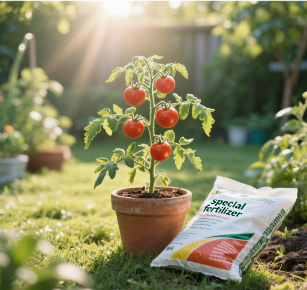Agricultural productivity hinges on precise nutrient management. Understanding the unique nutritional requirements of different crops is paramount. Different plant species have distinct demands for macronutrients and micronutrients, which directly impact yield potential, crop quality, and resilience to environmental stressors. This article summarizes evidence-based recommendations for nitrogen (N), phosphorus (P), potassium (K), and essential micronutrients, providing practical strategies to improve crop performance and reduce environmental impact.
1. Introduction: The Importance of Crop-Specific Nutrition
Plant nutrition requirements vary significantly by species. While all crops require essential macronutrients and micronutrients, the necessary ratios, forms, and application methods differ. For instance, rice thrives on ammonium-based nitrogen, while tobacco requires nitrate nitrogen to produce high-quality leaves. This article provides a structured analysis to guide precise fertilization strategies.
2. Nitrogen (N): Balancing Efficiency and Crop Physiology
Nitrogen is essential for plant growth, but its management must align with the specific needs of the crop and the soil conditions.
- Cereal crops (rice, wheat, corn):
- Rice: Prefers ammonium-based fertilizers (e.g., urea or NH₄Cl) in flooded conditions. Research shows 15-20% higher nitrogen (N)-use efficiency with NH₄⁺ than with NO₃⁻ in paddy systems.
- Wheat and corn are equally responsive to NH₄⁺ and NO₃⁻. Equally responsive to NH₄⁺ and NO₃⁻. Split applications (50% basal + 50% topdressing) improve recovery by 30-40%.
- Tuber crops (potato, sweet potato): Apply 120-150 kg N/ha, favoring ammonium sources. Excessive nitrogen (N) promotes foliage growth over tuber development.
- Specialized crops:
- Tobacco: Use nitrate nitrogen (NO₃⁻) for improved combustibility. Avoid NH₄Cl, as it reduces smoking quality by 15-20%.
- Legumes: Limit starter nitrogen (N) to 20-30 kg/ha before nodulation. Excessive application can suppress nitrogenase activity by 50%.
Regional Adjustments:
- Acidic soils (pH <5.5): Use calcium nitrate to neutralize the acidity, which can increase root growth and enhance nitrogen (N) uptake.
- Alkaline soils (pH > 7.5): Combine urea with nitrification inhibitors to prevent NH₃ volatilization (30% loss). This combination maintains soil moisture and nitrogen (N) availability, leading to improved yields.
In alkaline soils, combining urea with nitrification inhibitors is crucial because urea can quickly convert to ammonia (NH₃), which volatilizes and is lost more easily in high pH conditions. Inhibitors slow this process, ensuring more nitrogen (N) remains available for plant uptake and reducing the environmental impact of N loss. Understanding and managing these soil-specific nuances allows farmers to optimize nitrogen use and maximize crop yields.
3. Phosphorus (P): Enhancing Availability and Efficiency
Effective phosphorus management requires precise strategies to overcome fixation and improve uptake.
- High-Response Crops:
– Oilseeds (soybean, peanut): Apply 40-60 kg P₂O₅/ha. Seed inoculation with phosphorus-solubilizing bacteria increases availability by 25%.
– Root crops (potato, sugar beet): Band application of superphosphate (0-45-0) near the roots improves efficiency by 35-50% compared to broadcast methods.
- Mitigating P Fixation:
– Acidic soils: Up to 80% of phosphorus (P) may bind to iron (Fe) and aluminum (Al) compounds. Rotating with phosphorus-responsive crops can reduce future application rates by 30% due to residual availability.
4. Potassium (K): Crop Sensitivity and Demand
Potassium management varies based on sensitivity to chloride and demand.
- Chloride-sensitive crops:
– Tobacco, grapes, and citrus. Replace KCl with K₂SO₄ (0-0-50) to avoid toxicity and yield reduction by 15-25%.
– Potatoes: K₂SO₄ increases starch content by 2-3% compared to KCl.
- High-K Demanders:
– Banana: Require 300-400 kg K₂O/ha/year due to continuous fruiting.
– Tomato: Applying foliar potassium nitrate (KNO₃) during fruiting elevates Brix by 1-2 degrees.
5. Micronutrients and Special Nutrients: Addressing Hidden Needs
Although macronutrients form the foundation, micronutrients and specialized elements play critical roles in crop growth and development.
- Micronutrient Requirements:
– Boron (B): Essential for reproductive success in plants. It plays a crucial role in pollen tube development and cell wall formation. Canola requires 1-2 kg B/ha to prevent “hollow stem,” a condition in which the stem appears hollow due to incomplete cell development. In fruit trees, spraying with 0.2% borax can improve fruit retention by 20% and prevent fruit drop caused by boron deficiency.
– Molybdenum (Mo): Molybdenum is a key component of enzymes involved in nitrogen fixation in legumes. Applying 50-100 g of sodium molybdate (Na₂MoO₄)/ha can increase nitrogen fixation efficiency by 30%, enhancing overall plant growth and yield. A lack of molybdenum can lead to stunted growth and poor nitrogen utilization.
– Zinc (Zn): Zinc is essential for numerous enzymatic processes in plants, including photosynthesis and growth regulation. Applying 5-10 kg of ZnSO₄ per hectare (ha) of rice or corn can prevent “khara disease,” which is characterized by stunted growth and yellowing leaves. Zinc also improves drought tolerance by enhancing root development and water use efficiency.
- Specialized Nutrients:
– Silicon for Rice: Silicon strengthens cell walls and enhances disease resistance in rice plants. Applying 500-1000 kg/ha of calcium silicate slag to acidic soils can reduce lodging by 50% and increase yield by 15-20%. A lack of silicon makes rice plants more susceptible to diseases and lodging.
– Sodium for sugar beets: Sodium maintains cell turgor and enhances sucrose transport in sugar beet plants. Applying 50-100 kg of sodium nitrate (NaNO₃)/ha can improve the quality and quantity of sugar produced. Insufficient sodium can result in poor cell function and reduced sucrose accumulation.
By understanding the specific roles and potential deficiencies of these micronutrients, farmers can make informed decisions to optimize crop nutrition and productivity.
6. Conclusion: The Path to Precision Nutrition
Achieving sustainable, high yields demands a holistic approach.
- Soil Testing: Customize programs based on fertility status.
- 4R Principle: Apply the right source, rate, time, and placement.
- Crop-Specific Strategies: Match formulations to crop chemistry (e.g., NH₄⁺ for rice and NO₃⁻ for tobacco).
- Synergy with Organics: Blend mineral fertilizers with compost (5-10 tons per hectare) to improve retention.
Adopting these practices can increase yields by 20-40% while reducing nutrient losses. Future advancements in slow-release technologies and nanofertilizers promise to increase efficiency even more.
In summary, balanced crop nutrition involves providing essential nutrients to crops in optimal amounts based on scientific principles. This approach enhances productivity and promotes sustainable agricultural practices. The article emphasizes the importance of balancing nutrient inputs to ensure efficient crop utilization, minimize environmental impact, and maintain long-term soil health. By emphasizing the scientific basis for nutrient management, the article underscores the importance of informed decision-making in agriculture.









